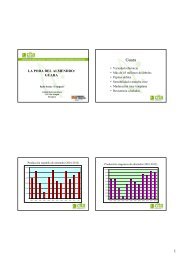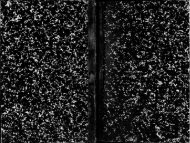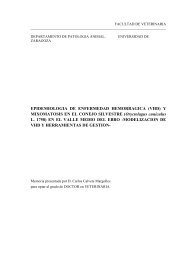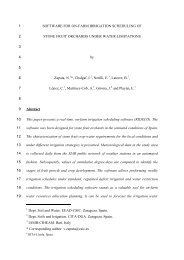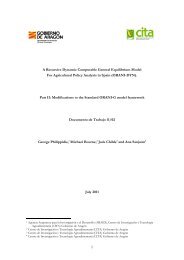Blighia sapida Ackee Blighia sapida Ackee Blighia sapida Ackee
Blighia sapida Ackee Blighia sapida Ackee Blighia sapida Ackee
Blighia sapida Ackee Blighia sapida Ackee Blighia sapida Ackee
You also want an ePaper? Increase the reach of your titles
YUMPU automatically turns print PDFs into web optimized ePapers that Google loves.
<strong>Blighia</strong> <strong>sapida</strong> <strong>Ackee</strong> <strong>Blighia</strong> <strong>sapida</strong> <strong>Ackee</strong> <strong>Blighia</strong> <strong>sapida</strong> <strong>Ackee</strong><br />
© M. EKUÉ<br />
their preferred traits more frequently than<br />
trees in the wild or that were unmanaged.<br />
Threats<br />
<strong>Ackee</strong> is threatened by the same factors as<br />
other savannah tree species: deforestation,<br />
bush fires, intensification of agriculture,<br />
livestock grazing and shifting rainfall patterns.<br />
Trees are also harvested for their wood for<br />
lumber and charcoal production but the<br />
degree to which cutting threatens the species<br />
is not known.<br />
The bark of some trees in Benin is<br />
systematically removed and used in traditional<br />
<strong>Ackee</strong> bark used for medicinal purposes<br />
medicines but it is not clear to what extent<br />
this practice affects the growth, fruit<br />
production, health or even life of the trees.<br />
Future studies should investigate the impact of<br />
bark harvesting on the species.<br />
Conservation status<br />
<strong>Ackee</strong> is present in home gardens and<br />
parklands in many countries in sub-Saharan<br />
Africa where it has a degree of protection<br />
because of its economic value. It also occurs in<br />
national parks, sacred forests and protected<br />
forest reserves in the Guinean zone across the<br />
region, but the number and distribution of<br />
stands in protected areasisnot known, so it is<br />
not possible to estimate the adequacy of in<br />
situ protection.<br />
There are no known ex situ conservation<br />
efforts. The recalcitrant seed would not<br />
maintain viability in a seed bank and there are<br />
no reports in the literature of field clone banks<br />
or provenance trials.<br />
Management<br />
and improvement<br />
Selection and domestication<br />
Tree improvement and domestication activities<br />
have not yet been initiated by any research or<br />
management institution in West Africa, but trees<br />
are commonly planted near homes to provide a<br />
variety of products and services so farmers are<br />
practicing artificial selection and the early stages<br />
of domestication.<br />
Three regeneration techniques for ackee are<br />
recorded in Benin: sowing, transplanting and<br />
assisted tree regeneration. The reason behind<br />
each regeneration method and the practical<br />
implementations are summarized in Table 1.<br />
Farmers interviewed in Benin were interested<br />
in cultivation and improvement of ackee and 55%<br />
of respondents would like access to vegetative<br />
propagation techniques. Traits considered<br />
important for improvement included arils with<br />
higher oil content (35% of respondents),<br />
capsules and seeds with higher saponin content<br />
(30%), early fruiting varieties (26%), trees<br />
bearing fruits in different seasons (25%), smaller<br />
trees (20%) and trees with a prolonged period of<br />
fruit maturation (15%).<br />
Farmers practice pruning, ringing, grazing<br />
protection, tree/crop association, fire protection<br />
and mulching to improve production (Table 2).<br />
Propagation from seed<br />
<strong>Ackee</strong> may be grown from seed, but the seed<br />
05



